Digital Field Experiences as a Tool for Community Engagement

Digital Field Experiences (DFE)
My name is Caroline Nickerson, and I’m passionate about helping people understand climate change. For my dissertation, I wanted to investigate: could a live webinar from a field site—henceforth dubbed a digital field experience (DFE)—led by a UF/IFAS Extension agent educate people about climate change and a particular climate impact in a county, changing the way attendees think about climate change, their concerns about the topic, and their behavioral intentions?
The answer, I found, is a resounding “Yes!”
The Research Part
The official research blurb is: “This study provided insight regarding and a model of how Extension’s use of live-streamed programming, specifically that of DFEs, fills a documented gap of needed guidance for the public about how to respond to climate change and environmental problems.”
The objectives of the study were to explore the influence of the DFE model, regarding climate change and the environment, on:
- Participants’ subject matter knowledge of the environment and climate change, with some focus on the topic discussed during the DFE;
- Participants’ thoughts about environmental protection, the effects of pollution, and belief in the impact of climate change;
- Participants’ concerns about the consequences of climate change on their lifestyle, health, community, all people, and plants;
- Participants’ behavioral intentions to improve the environment and take action because of the DFE;
- Suggested best practices about the DFE as a model and use of live-streaming technologies for science communication by Extension.
The study was inspired by the Situational Theory of Problem Solving, the Theory of Planned Behavior, and the adult learning theories of experiential and transformational learning to create a conceptual model of a DFE’s impact. For my survey questions, I included items inspired by these theories, as well as from existing instruments and scales (scales are sets of survey questions that are intended to measure the same phenomenon) – in my case, I adapted the Awareness of Consequences (Stern, 2000) scale and the Environmental Concern (Schultz, 2001) scale.
Thanks to funding from the CEE-Change fellowship and SciStarter, I hosted five DFEs that were conducted and assessed in partnership with UF/IFAS Extension to educate adults in Florida about climate change subject matter knowledge and calls to action, including participating in a citizen science project called ISeeChange.
Each program consisted of a mix of background information, live demos, and time for Q&A. The DFE’s were open to viewers across Florida (and beyond!) but the programs themselves included examples from the featured county and were designed with residents of that county in mind.Recordings were archived on the Streaming Science website, and will appear as part of the ClimateSmart Floridians course and elsewhere. There were programs featuring Brevard County, Escambia County, Sarasota County, Miami-Dade County, and Monroe County. I called the series “ClimateCast LIVE.”
Most programs included a camera person who held an iPad, a mix of live demos in the field and slides presented from a laptop on a stand in the field, at least one featured subject matter expert from Extension and/or local government, and then of course me—Caroline Nickerson—as an MC for the live stream and facilitator for Q&A with live participants.
I adapted the model from what my PhD advisor, Dr. Jamie Loizzo, pioneered with electronic field trips for youth learners. Dr. Peyton Beattie—one of Dr. Loizzo’s former advisees—originated the digital field experience concept for UF/IFAS Extension. I took Dr. Beattie’s work a step further by evaluating the impact of DFEs on participants and getting more feedback from Extension agents about the DFE model itself.
I am indebted to both Dr. Loizzo and Dr. Beattie, as well as to my PhD committee—Dr. Lisa Lundy, Dr. Laura Warner, and Dr. Matt Jacobs—for helping me think through the whole process of thoughtfully evaluating DFEs.
The Findings
Extension agents and the primary researcher (me) for this project conducted and evaluated five DFEs across Florida, with an explanatory mixed methods study.
Analysis of a viewer survey, follow-up interviews with select survey respondents, and a focus group with the Extension agents who planned the DFEs indicated that DFEs can increase participant subject matter knowledge, increase the intensity of participant thoughts and concerns about climate change, and increase participant behavioral intentions to address climate change and environmental problems. This indicates that DFEs and live-streaming technology used by Extension can be an effective way to communicate about climate change and environmental problems.
This is the conceptual model of a DFE’s impact:
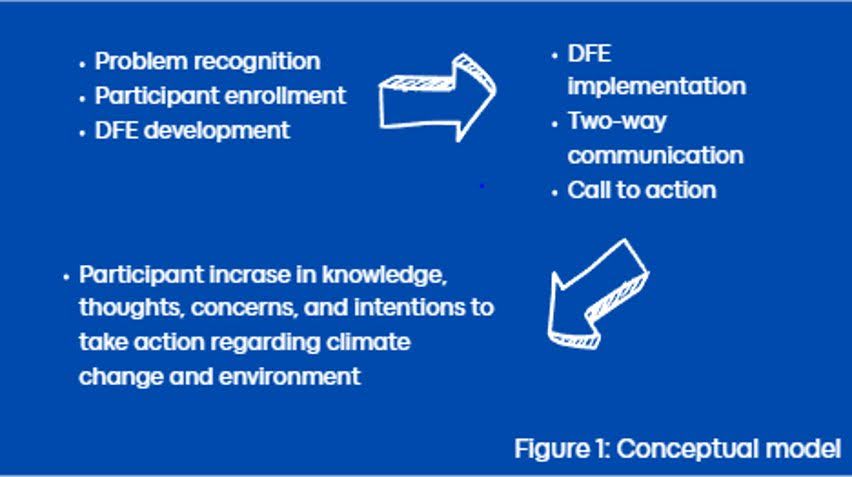
How Could This Be Used?
I think the DFE model could be used by nonprofit professionals and environmental educators beyond Extension to liven up webinars and enhance their public communication programming.
Earlier this year, Dr. Beattie and I presented a webinar about DFEs for UF’s Program Development and Evaluation Center. Below, I include some screenshots from my slides to guide interested people through the process of creating a DFE.
Below is an example of a step-by-step guide to hosting a DFE:
- Decide on your topic (extreme heat, flooding, etc.), and recruit a subject matter expert. Extension agents are great partners and have a wealth of knowledge they can share.. With your subject matter expert, you can figure out a call to action for participants: what do you want them to do after they see your presentation? Next, tailor content and demos that relate to that.
- Decide on your field site. What place has the most interesting visuals that relate to your topic? Then, head out to your field site and test your equipment and your WiFi phone hotspot there. All you need is an iPad, a case for the iPad with handles, some microphones (I recommend the Samson technologies), a stand for your laptop, a WiFi hotspot, a team, and a dream…and then you’re ready to go!
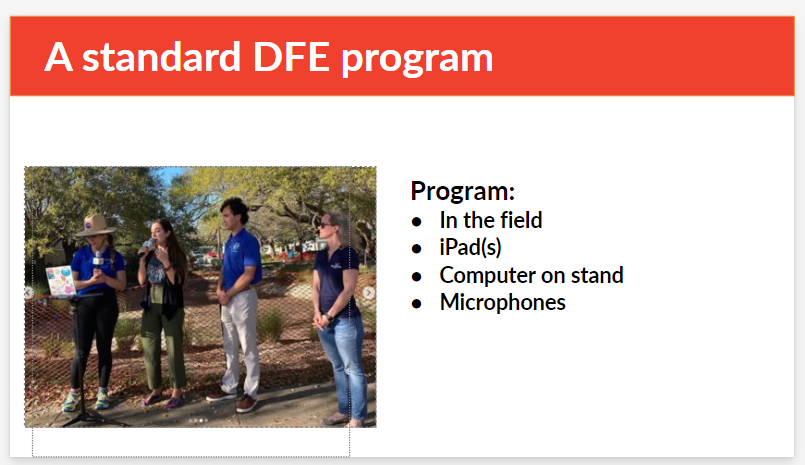
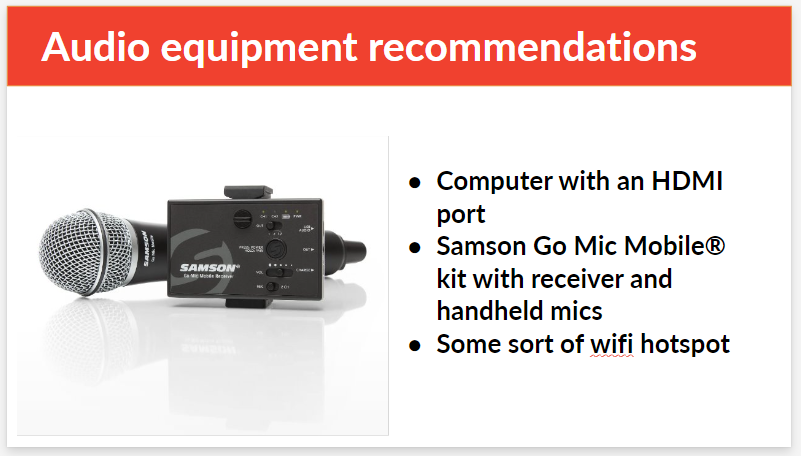
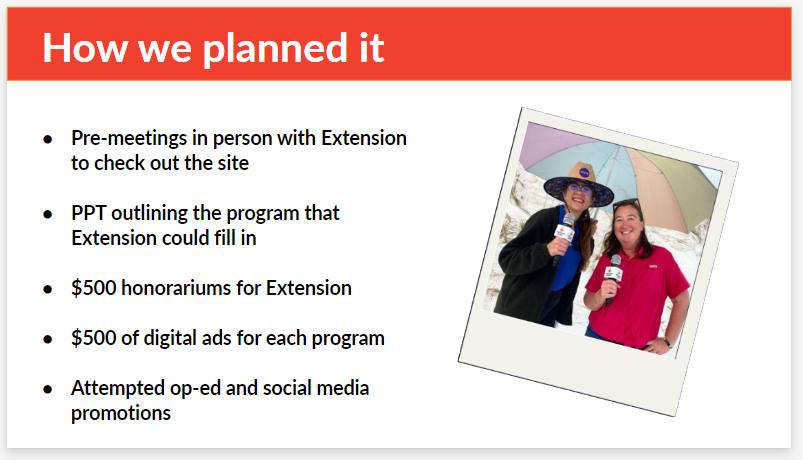
- When structuring the content of your DFE, think about what you want participants to get out of it. The Extension agents and I created a template slide deck, and then filled that out to reflect the content of each DFE.
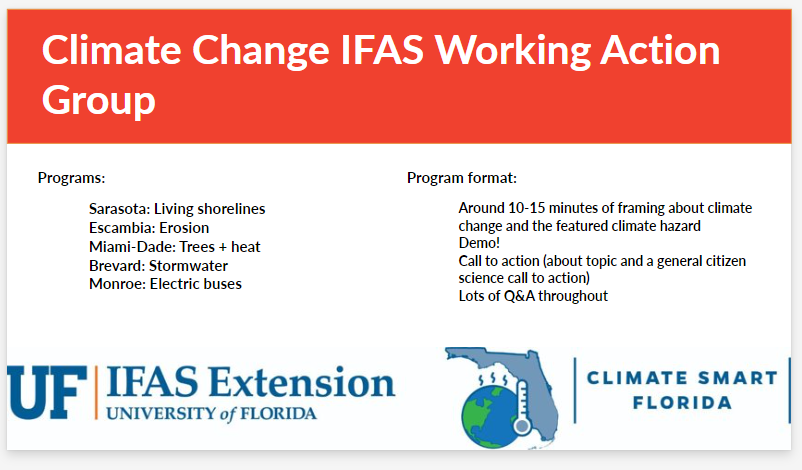
If you have particular research objectives, create your survey ahead of time to make sure you’re asking about what you’re presenting in the DFE. Pull in existing scales that other researchers have used to measure different things, like “participant concerns about climate change.” Google scholar is your friend for this!

- Now that you’ve planned your slides and demos (and demos could be as simple as turning off the slides and then walking around to point at different aspects of the climate impact you’re spotlighting, as the camera person follows you with the iPad), it’s time to promote your DFE!
To promote my events, I distributed a fun postcard virtually, ran digital ads, and received some newspaper coverage.

I promoted my DFE by sending a press release and op-eds to local newspapers. My press release is on the Streaming Science website, if you’d like a model.

Image credit: Caroline Nickerson
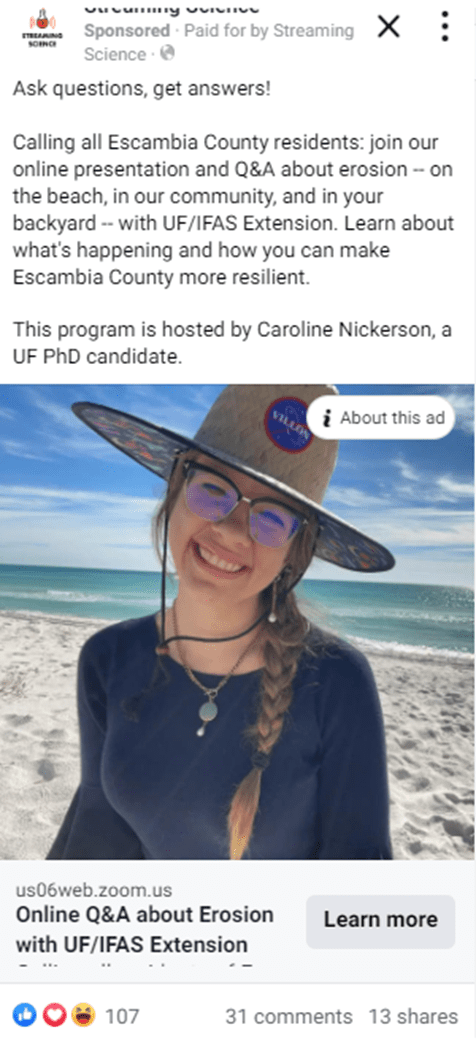
Image credit: Caroline Nickerson
I also ran Facebook ads (thanks to funding from CEE-Change and SciStarter). The bulk of my participants came from these ads. In addition, I leveraged email listservs. Spread the word through as many channels as you can.
- Do the DFE! Go to your field site, go live on Zoom, and see what happens. Be prepared for unexpected surprises—perhaps bring your umbrella so your equipment doesn’t overheat—and be ready to have fun.
- After the DFE is over, email participants follow-up materials about the calls to action you shared (e.g., you can volunteer at this place at this time).
The first step to solving problems caused by climate change is talking about them. Hopefully, the DFE model is a helpful tool for you to do just that!
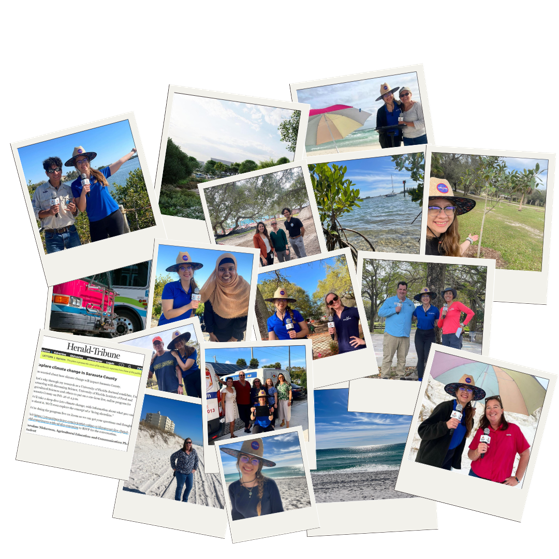
Have questions for me? Want to work with me to run your own DFE? All of my info can be found at https://carolinenickerson.com
I successfully defended my dissertation on August 30 (feel free to watch the recording: Caroline Nickerson's PhD defense).
Also, my journey as a CEE-Change Fellow included much more than the DFEs. If you’re interested in that, check out a companion blog post.
When recapping my DFEs, I have to shout out my camera people!

My friend Aniqa holds the iPad for the Sarasota program. Photo credit: Caroline Nickerson
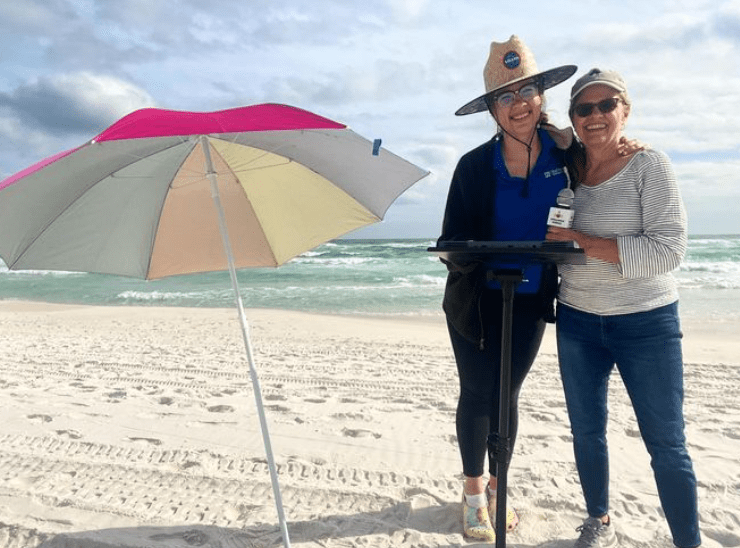
My mom supports me behind the scenes in Pensacola. Photo credit: Caroline Nickerson
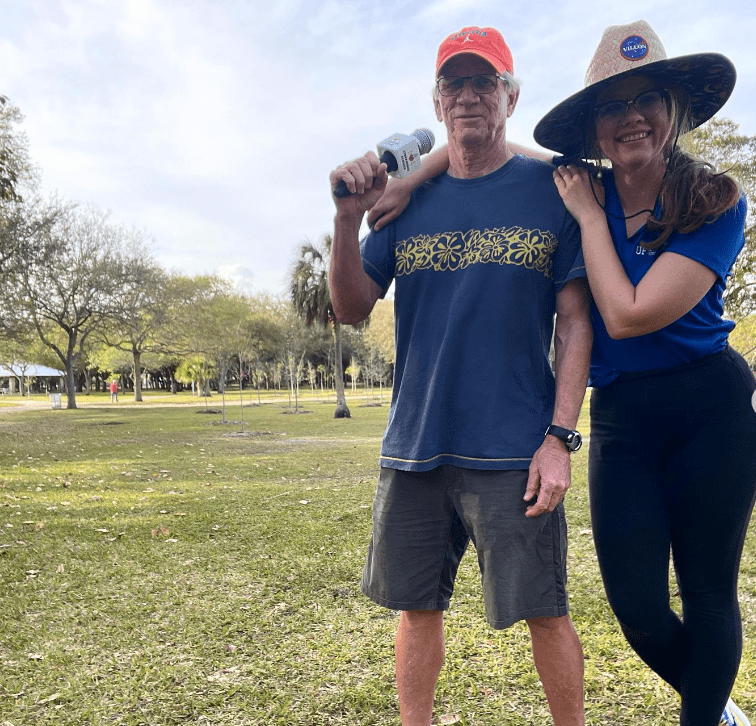
My father joins me in Miami-Dade County. Photo credit: Caroline Nickerson
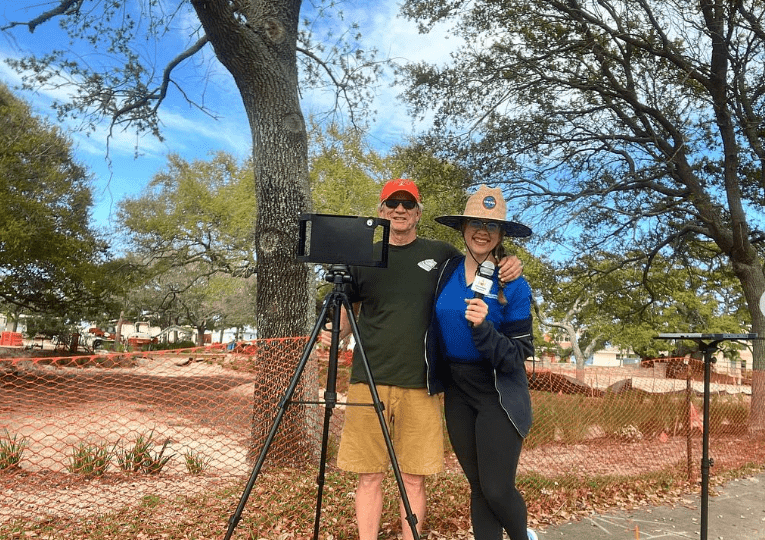
Dad reprises his performance for Brevard County. Photo credit: Caroline Nickerson
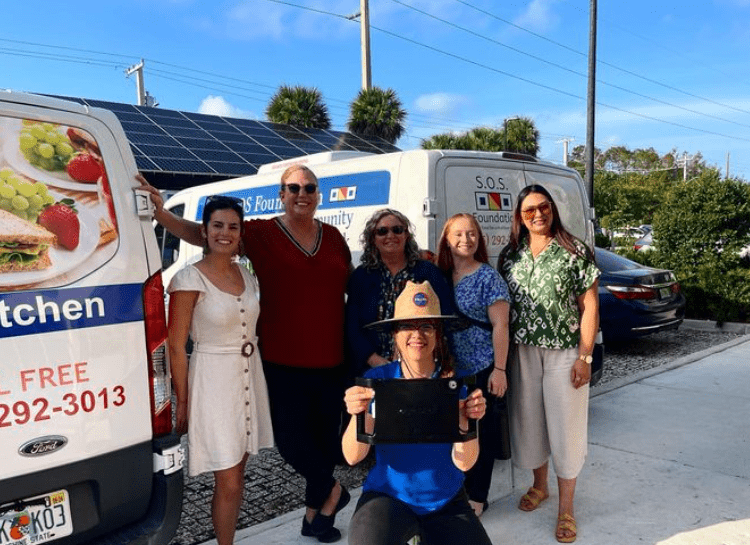
I'm behind the camera in Monroe County—Key West. We had so many amazing folks from the City of Key West join, along with multiple fearless Extension staff from the Monroe office, led by Alicia. The Extension agents and local government partners I worked with were so inspiring. Photo credit: Caroline Nickerson

Armando was our Extension expert in Sarasota. Photo credit: Caroline Nickerson
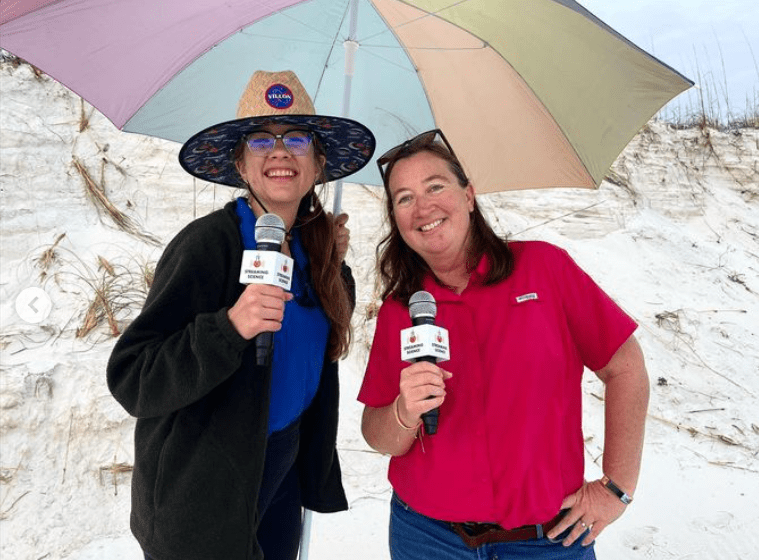
Carrie was our Extension expert in Escambia County. Photo credit: Caroline Nickerson

Ana and Jeff were our Extension experts in Miami-Dade County. Photo credit: Caroline Nickerson

In Brevard County, Lexi and Zach from the City of Cape Canaveral joined us, and Holly was our Extension expert. Photo credit: Caroline Nickerson
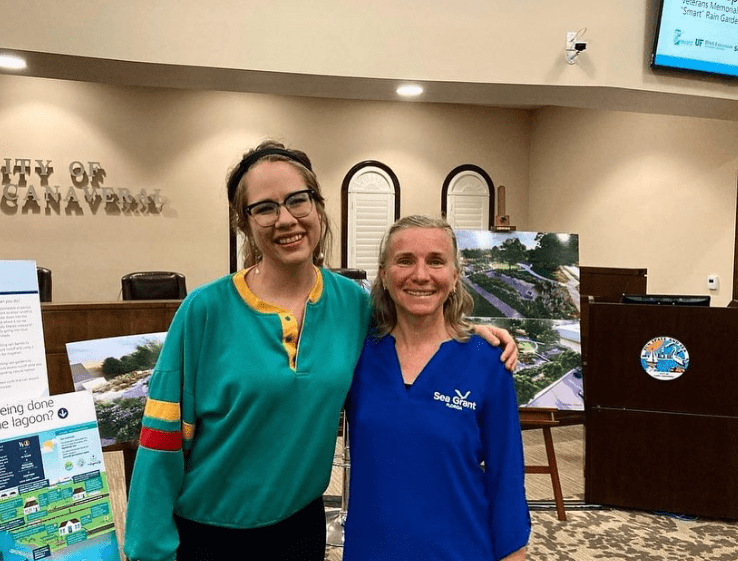
Mandy, Holly’s colleague and a CEE-Change alum, was a huge help in Brevard County when our equipment overheated! Photo credit: Caroline Nickerson



